Judith Holt: Working For The Day

Distinguished Acheivement Award at the Association
of University Centers on Disability conference in
Washington, D.C. in November
Jesien Award recipent reflects on career-long quest for inclusion for people with disabilities
By Dr. Judith Holt Co-director, Utah Regional Leadership Education in Neurodevelopmental Disabilities
I heard on the news recently that more classified files relating to the 1962 assassination of President John F. Kennedy had been released. I always associate 1962 with another significant event: I was introduced to the field of disabilities.
I was in a graduate program and we took a “field trip” to the state’s developmental school. I distinctly remember that a small group of young men were sweeping the halls. My professor told us that they were “mongoloids” and could not be part of society so they should be institutionalized. I also remember thinking that they were singing and walking and sweeping the floor—so maybe they could learn. This disconnect between what society said and what individuals with disabilities could do was evident, even to a young graduate student over 50 years ago.
Fast forward to 1972, another university (this time in Texas), and me entering a doctoral program in special education. I was unsure about what area to specialize in, so my faculty mentor told me about a new pilot program that was federally funded to teach young children with disabilities. There were eight students in the class ranging in age from two to five years with various disabilities: visual impairment, unidentified genetic conditions, cerebral palsy, and Down syndrome. I was totally captivated by the amazing children and the challenge to support them to learn and develop. Our assumption was not to focus on perceived limitations, but on what could be accomplished. The results were slow and uneven, but always moving forward. Young children with disabilities could learn to communicate (sometimes using signs and gestures rather than words) and move in their environment (with walkers and wheelchairs, and adaptive equipment) and engage in play with other children. In other words, accomplish the same tasks as children without disabilities. I became an early childhood special educator and loved it. Each child was a promise for the future and even society was moving, a little, toward more understanding. Head Start mandated that at least 10% of the children enrolled in the program needed to be those with disabilities and that was an incredible step that impacted thousands of children from families with limited incomes.

CPD file photo.
The mid-seventies also saw an amendment (Section 4) to the Vocational Rehabilitation Act that prohibited programs receiving federal funding from discriminating against individuals with disabilities. Major civil rights advocacy and legislation in the US reinforced the “separate is not equal” concept in discussions. The civil rights movement was the impetus for individuals with disabilities to also be acknowledged as having rights. On the school-aged side, the Education of All Handicapped Children’s Act (Public Law 94-142) was also moving through Congress. This introduced a key concept: All children with disabilities ages 6-17 were entitled to a free appropriate public education in the least restrictive environment. For the first time across the US, all children, including those with significant disabilities, had the right to attend public school! It was no longer a debate, but a right. Children could no longer be denied admittance to public schools nor, if admitted, assigned to a segregated setting. And the key point to remember about the passing of PL 94-142 was the strength, commitment, and resolve of the parents to get the education for their children that other children had. They lobbied state and federal legislators, faced incredible obstacles, and just kept on pushing. And a growing cadre of professionals agreed with them. All children deserved opportunities; all children could learn; all children needed to be educated together.
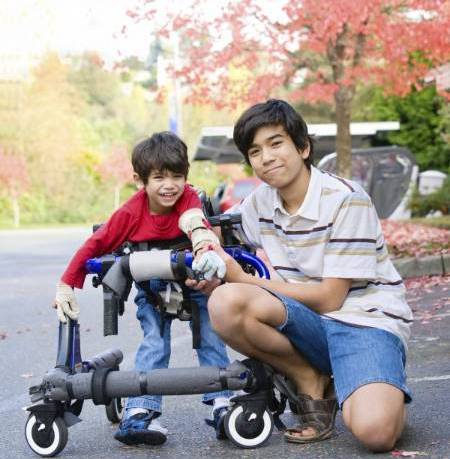
However, rights, even those guaranteed by law, don’t come easily. Especially when societal attitudes still saw individuals with disabilities as incompetent, dependent, and unable to be members of the community. Lawsuits and administrative rules often blocked children from public school. Public concern about the dollars spent on children who couldn’t contribute to society was routinely heard. I spent the rest of the 1970s and the 1980s in Louisiana working primarily for the Louisiana Department of Education as we tried to implement PL 94-142 in the school systems. I came to a clearer understanding that rules and laws can help people with disabilities get the doors open, but what happens next is often problematic. I wrote state plans for federal funding and developed state laws, regulations, and monitoring systems. Hopefully they helped expand opportunities for students with disabilities. Still, parents had to be constantly vigilant to ensure that their child’s rights were upheld and that they (the parents) were treated as equal partners with professionals. Too often, parents were still told what was best for their child based on administrative convenience of the schools. Parent training and support were identified as critical to get the word out and to support parents in challenging discriminatory practices. As a professional, I recognized that families were also my best teachers. Families learned the most from other families who had had similar experiences. I finally understood that all of my professional expertise was not the equivalent of parenting a child 24-hours a day, year after year. I learned to listen more and offer less unsolicited opinions on what was best for the child. In other words, I worked on being a partner, not the expert."
Perhaps one of the most painful and poignant lessons learned was that everyone can, and does, learn and that we all need people who care about us. As part of a federal court order, children with disabilities who had been in institutions in Texas were returning to Louisiana. I was part of a team tasked by the judge to determine what they needed educationally and who should represent them. I was assigned to evaluate a 10-year old girl (I will call her Ruby) from a very rural area who had been placed in Texas by the state when her family could not care for her. She had been born with hydrocephalus and there was no medical treatment available for her. Over the years, because the fluid around the brain did not drain properly, her head had grown enormously. It took 2 adults to lift her head, one to support her neck, and one to lift her small body. She could not see, or move, or speak. Her IQ had been noted in the files as zero. I reviewed all the records and as I was observing her, I asked two of the staff about her. They responded enthusiastically that Ruby could swallow very well and that she liked her food. Since that was the first positive thing I had read or heard about her, I asked them what she liked to do. They quickly replied that Ruby loved to go outside. With help from other staff, they carefully lifted her into a little red wagon with padding and then slowly pulled the wagon down the corridor to the doors. When the wagon reached the fresh air, Ruby smiled. The staff also wanted me to know that she loved music. I again asked them to show me. They put the cardboard from a paper towel roll up to her ear and sang softly into it. She smiled again. They had clearly found who Ruby was as a person and not just as a series of labels and deficits. I recommended to the judge that for educational purposes, Ruby’s staff should represent her. The staff, by the way, were not licensed, trained professionals. Ruby stayed in a small facility in Louisiana, closer to her family, until she passed away a few years later.
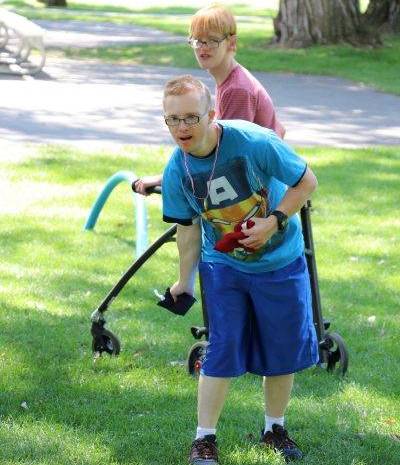
for people with disabilities. But again, changing society would prove
more difficult than changing the law." CPD file photo.
But there were even more challenges, especially regarding adults with disabilities. In 1990, the Americans with Disabilities Act (ADA) was passed by Congress. We had hoped for this day for a long time. One of the biggest challenges was deciding how to define a disability. Finally, a very broad and inclusive definition was adopted. This greatly expanded the number of individuals who would be covered by the ADA. Essentially, the ADA was the biggest step toward full civil rights for people with disabilities. But again, changing society would prove more difficult than changing the law. Many adults with disabilities were still housed in large congregate care institutions and, if living in the community, were still with their parents and possibly working in a sheltered workshop. In other words, still segregated and still wanting to have a chance at a real life where they had choices, and where society had positive expectations for them. In an institution, choosing whether you wanted either the green or red jello is not much of a choice, and in the community, the highest hope for employment was perhaps part-time in fast food. In 1990, I began working for the UCEDD in Arkansas. I had spent my professional career to that point working with young children who had disabilities and their families and at the state level developing policies and procedures to implement and improve programs and services for students with disabilities. With my arrival in Arkansas, my boss said that they had enough expertise in early childhood and I needed to begin to define what the needs were for adults with disabilities. I honestly thought that with the passage of the ADA, all needs would be met. I soon realized that I had a lot to learn and that there were an incredible number of obstacles that adults with disabilities faced in being part of their community, the workforce, getting health care and housing, and just accessing the programs and services. Unemployment rates for adults with disabilities were dismal, there were very, very, very limited opportunities to receive supports and services in integrated settings in the community, and social opportunities were often still almost nonexistent.
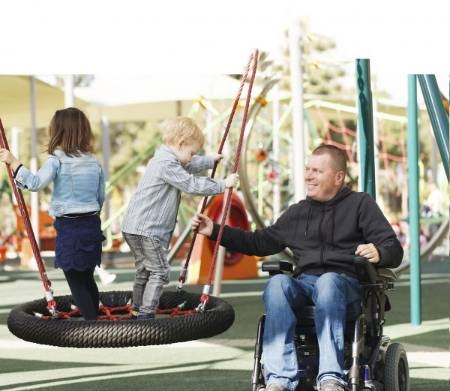
I soon realized that I had a lot to learn and that there were an incredible number
of obstacles that adults with disabilities faced in being part of their community."
Even for those with disabilities who were well-educated, societal barriers were formidable. A friend of mine, who was completing his medical residency, still had to enter most restaurants through the kitchen door since the front doors were not accessible for someone using a wheelchair. Another friend was denied admittance to a graduate program because she was blind and the university felt that she could not handle the large campus and the academic expectations—even though she had previously worked as a Russian translator for a major government agency. During the 90’s it took an incredible amount of work on the part of advocates and advocacy organizations (including lawsuits and civil disobedience) to continue to bring public attention to issues of discrimination and inequity. I had the opportunity to participate in both lawsuits and civil disobedience actions! I helped a group of activists who had disabilities occupy the office of then-Governor Bill Clinton to get his attention about Medicaid cuts that would force many with disabilities back into institutions. It was both exciting and stressful. We hoped the governor wouldn’t retaliate and the police wouldn’t arrest us! Fortunately, the police didn’t have much experience in arresting folks in wheelchairs, so all ended well…. And the Medicaid cut was rescinded. The momentum toward the rights of people with disabilities accelerated with the US Supreme Court Decision in 1996 in Olmstead v. L.C. This decision established the right of individuals with disabilities to live in integrated community settings and encouraged states to move in this direction. In fact, the Olmstead Decision was so important, the advocacy organizations across the county sponsored training for individuals with disabilities and their families to help them understand the promise of Olmstead. I had the honor to help design and support this training. By the time I came to Utah in 2000, I had seen many changes and improvements, but there were still major barriers to “all” really meaning “all”. One of the most difficult and persistent challenges to adults with disabilities having productive, self-determined lives was obtaining health care. The barriers were both at the systemic and individual level. At the state and national level, Medicaid provided access to health care for adults with disabilities, but to qualify for Medicaid, you had to have significant disabilities and very limited income and resources. I worked with a group of advocates, state agencies, and community organizations to help Utahns with disabilities to have better employment, while still maintaining their Medicaid eligibility. In addition, outreach activities, including distance technology, were designed to reach rural and frontier populations in Utah. We focused on youth and young adults and their families to help them understand that there were opportunities to work in integrated, competitive settings and still receive Medicaid benefits. But this was a difficult concept for many families who had never expected their child to be able to work, and for professionals who worried that the adult child might lose their safety net to Medicaid and SSI benefits. At an individual level, additional barriers were present. Health care provider’s offices and services were often not readily accessible to individuals with sensory or motor impairments. And many providers did not understand either the systems of services of people with disabilities, or recognize the importance of choices and self-determination. Families of children with disabilities and adults with disabilities were often frustrated by the benign paternalism of the health care providers—"The doctor (or therapist or nurse) knows best"— and felt that they were not being heard and that the quality of health care received was not age- or disability appropriate. For example, pediatricians often continued to see adults with disabilities who had been their patients as children. This occurred because the pediatricians felt that the adult medical providers did not want to see adults with disabilities and that the adult providers weren’t properly trained or interested in disabilities.
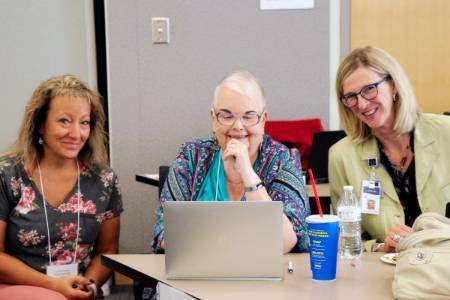
LaDawn Nielsen of the CPD.
In 2001, in partnership with the University of Utah Medical School, the Utah Department of Health, and the Utah Family Voices, the CPD submitted a grant for funding from the federal Maternal and Child Health Bureau to provide leadership training for health and medical advanced standing graduate- and post-graduate students and practicing professionals. Its purpose was to better prepare them to provide interdisciplinary care to children with neurodevelopmental disabilities and special health care needs. In a highly competitive arena, the Utah Regional Leadership Education in Neurodevelopmental Disabilities (URLEND) program was funded. Of the 31 programs then funded, it was notable in that it was the first to have long-term trainees in other states (ID, MT, ND, and WY) and the first to use distance technology for didactic, clinical, and leadership experiences. I have had the honor of serving as the Co-Director of URLEND for the past 17 years and have been joined by over 20 highly skilled faculty from eight universities across the region. In that time, we have had over 365 long-term trainees successfully complete the program from 18 disciplines such as pediatrics, psychiatry, family practice, neurology, obstetrics/gynecology, audiology, pharmacy, health administration, pediatric dentistry, psychology, social work, genetics, speech and language pathology, education, special education, physical therapy, occupational therapy, public health, nutrition, family and human development, and law. URLEND also has trainees who are family members of children and adults with disabilities, advocates (adults with disabilities), and community members. URLEND is changing the perspectives and skills of health care professionals in UT and our partner states.
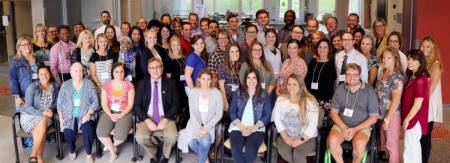
(front, fourth from left), 2017
We have also changed how rural and frontier states can actively engage professionals and students using distance technology. In addition, families and advocates from across the region have participated in URLEND as trainees, guest speakers, consultants, mentors, and faculty members. I have over the past 50 years tried to both understand and implement the concept of “all means all.” I have not succeeded. So many challenges remain. But now, society sees individuals with disabilities in visible, productive roles; housing and employment are real possibilities; and health care has improved. We have only begun to address the mental health needs of individuals with disabilities and the intersectionality of disability and racial and ethnic diversity. And then there is aging. As one who is older (actually quite old), I painfully recognize that we, as a field, have not carefully considered the needs of aging adults with disabilities nor have we partnered with them to better understand quality of life issues. So much to do, so little time.

